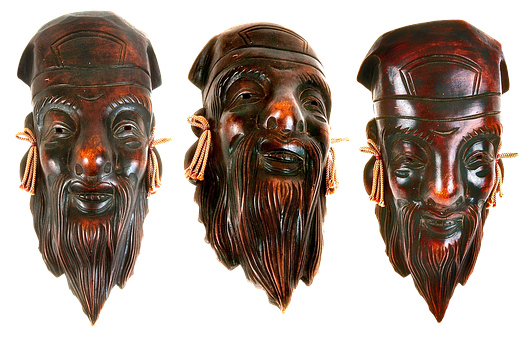Sabtu, 27 Januari 2018
Senin, 15 Januari 2018
Minggu, 14 Januari 2018
ni saya kasih mentahan api tinggal donloand di sini
contoh:
contoh:
yang tekues mentahan silahkan komen di bawah
trima kasih
Sabtu, 13 Januari 2018
Jumat, 12 Januari 2018
Rabu, 10 Januari 2018
Multimedia is the use of computers to present and combine text, sound, images, animation, audio and video with tools and links so users can navigate, interact, work and communicate. Multimedia is often used in the world of informatics. Apart from the world of informatics, multimedia is also adopted by the gaming world, and also to create websites.
Multimedia is also used in the world of education and business. In the world of education, multimedia is used as a medium of instruction, either in the classroom or individually or self-taught. In the business world, multimedia is used as a media company profile, product profile, even as a media kiosk of information and training in e-learning system.
Initially multimedia includes only the media into the consumption of the senses of vision (still images, texts, video motion pictures, and motion pictures / fantasy), and the consumption of the sense of hearing (voice) and also form (tangible). In the development of multimedia includes also kinetic (motion) and odor which is the consumption of sense of smell. Multimedia began incorporating kinetic elements since it was applied to a 3-D movie show coupled with movement in the seating seats of the audience. Kinetic and 3-dimensional movies evoke a realistic sense.
The smell started to become a part of multimedia since odor reproduction technology was invented through telecommunication. With an odor detection input device, an operator can transmit the digitizing odor over the internet. The receiving computer must provide an output device in the form of an odor-reproducing machine. This odor-reproducing engine mixes different types of odor materials that, once mixed, produce an odor-like output similar to data sent from the internet. By analogizing the printer, this tool makes the odor pheromones instead of ink. Output not be printed, but the scent.
Multimedia is also used in the world of education and business. In the world of education, multimedia is used as a medium of instruction, either in the classroom or individually or self-taught. In the business world, multimedia is used as a media company profile, product profile, even as a media kiosk of information and training in e-learning system.
Initially multimedia includes only the media into the consumption of the senses of vision (still images, texts, video motion pictures, and motion pictures / fantasy), and the consumption of the sense of hearing (voice) and also form (tangible). In the development of multimedia includes also kinetic (motion) and odor which is the consumption of sense of smell. Multimedia began incorporating kinetic elements since it was applied to a 3-D movie show coupled with movement in the seating seats of the audience. Kinetic and 3-dimensional movies evoke a realistic sense.
The smell started to become a part of multimedia since odor reproduction technology was invented through telecommunication. With an odor detection input device, an operator can transmit the digitizing odor over the internet. The receiving computer must provide an output device in the form of an odor-reproducing machine. This odor-reproducing engine mixes different types of odor materials that, once mixed, produce an odor-like output similar to data sent from the internet. By analogizing the printer, this tool makes the odor pheromones instead of ink. Output not be printed, but the scent.
Kamis, 04 Januari 2018
VBScript or complete Visual Basic Scripting Edition is a scripting language that was interpreted when executed developed by Microsoft Corporation in 1996 which is often used in Internet Explorer web browsers (can be used from Internet Explorer 3.0 version). VBScript is a derived script language of the Visual Basic for Applications (VBA) programming language used in Microsoft Office and some other Microsoft-developed development platforms. VBScript eliminates some of the functions of VBA, as well as file I / O functions and direct access to the operating system to provide a secure platform for developing web-based applications using the Active Server Pages (ASP) platform. Internet Explorer is the first web browser to provide support for script code written in the VBScript language. VBScript can run on Windows 9x / ME, Windows 2000, Windows XP, Windows Server 2003, Windows Vista, Windows Server 2008 as well as some UNIX platforms.
VBScript can not be used to create stand-alone programs. However, VBScript must be entered into an HTML file. When Internet Explorer opens the HTML file document, VBScript can perform the same functionality as JavaScript - the script will be executed. VBScript can also be used to create an HTML alliance (which has a .HTA extension) that requires at least Internet Explorer 5 or later to run. HTA does not directly use Internet Explorer, but uses a program, which is MSHTA.EXE, which interprets and executes the code.
VBScript can not be used to create stand-alone programs. However, VBScript must be entered into an HTML file. When Internet Explorer opens the HTML file document, VBScript can perform the same functionality as JavaScript - the script will be executed. VBScript can also be used to create an HTML alliance (which has a .HTA extension) that requires at least Internet Explorer 5 or later to run. HTA does not directly use Internet Explorer, but uses a program, which is MSHTA.EXE, which interprets and executes the code.
jQuery is essentially a library for manipulating DOM (Document Object Model). Dom is a tree-tree representation of all elements contained in a Web page, and jQuery simplifies the syntax for searching, sorting, and manipulating the DOM elements. For example, jQuery can be used to search for elements in documents with certain properties (eg all elements with h1 tags), change one or more of these attributes (eg color, visibility), or make it respond to an event (eg when mouse is clicked) .
jQuery also provides a paradigm for handling out-of-date events and manipulation of DOM basic elements. Event assignment and event callback function can be done with just one step or one line of code. jQuery also aims to combine JavaScript functionality that is used (eg: fade in and fade out when hiding elements, animation by manipulating CSS properties).
The advantages of using jQuery are:
Encouraging the separation between JavaScript and HTML: The jQuery library provides a simple syntax for adding event handling to the DOM by simply using JavaScipt instead of adding HTML attribute events to call JavaScript functions. This is what drives developers to separate JavaScript code from HTML markup
Summary and clarity: jQuery promotes brevity and clarity of code with features like chainable function and shorthand function names.
Eliminating incompatibilities between browsers: The JavaScript engine in each browser must be slightly different from one to another, so JavaScript code running on a browser may not run on other browsers. Like any other JavaScript toolkit, jQuery takes care of all the inconsistencies between browsers and provides a consistent interface that works across different browsers.
Extensions: New events, elements, and methods can be easily added and then can be reused as a plugin.
jQuery also provides a paradigm for handling out-of-date events and manipulation of DOM basic elements. Event assignment and event callback function can be done with just one step or one line of code. jQuery also aims to combine JavaScript functionality that is used (eg: fade in and fade out when hiding elements, animation by manipulating CSS properties).
The advantages of using jQuery are:
Encouraging the separation between JavaScript and HTML: The jQuery library provides a simple syntax for adding event handling to the DOM by simply using JavaScipt instead of adding HTML attribute events to call JavaScript functions. This is what drives developers to separate JavaScript code from HTML markup
Summary and clarity: jQuery promotes brevity and clarity of code with features like chainable function and shorthand function names.
Eliminating incompatibilities between browsers: The JavaScript engine in each browser must be slightly different from one to another, so JavaScript code running on a browser may not run on other browsers. Like any other JavaScript toolkit, jQuery takes care of all the inconsistencies between browsers and provides a consistent interface that works across different browsers.
Extensions: New events, elements, and methods can be easily added and then can be reused as a plugin.
jQuery is a cross-platform JavaScript library designed to simplify client-side scripting in HTML. Today, jQuery is the most popular JavaScript library, with 65% installs of 10 million Web sites with the highest visitors. jQuery is free, and is open source code under MIT license.
Syntax in jQuery is designed to make it easier to navigate a document, selection of DOM elements, animation creation, event handling, and Ajax-based application development. jQuery also provides developers the ability to create plug-ins in this JavaScript library. This allows them to create abstractions on interaction and low-level animations, advanced effects, and modifiable widgets. The modular approach in jQuery allows us to create dynamic Web pages and web-based applications that are ajib.
A set of jQuery core features-the selection of DOM elements, transfers and manipulations-is possible thanks to a selector engine called Sizzle (since version 1.3), which creates a "new programming style", combining algorithms and DOM structure data. This style is influenced by other JavaScript architectures such as YUI v3 and Dojo, which in turn stimulate the creation of the default Selector API.
Microsoft and Nokia bundle jQuery on their platfoem. Microsoft includes it with Visual Studio in the creation of ASP.NET AJAX and its ASP.NET MVC framework. Meanwhile, Nokia integrates it in the Web Run-Time widget development platform. jQuery has also been used in MediaWiki since version 1.16.
Syntax in jQuery is designed to make it easier to navigate a document, selection of DOM elements, animation creation, event handling, and Ajax-based application development. jQuery also provides developers the ability to create plug-ins in this JavaScript library. This allows them to create abstractions on interaction and low-level animations, advanced effects, and modifiable widgets. The modular approach in jQuery allows us to create dynamic Web pages and web-based applications that are ajib.
A set of jQuery core features-the selection of DOM elements, transfers and manipulations-is possible thanks to a selector engine called Sizzle (since version 1.3), which creates a "new programming style", combining algorithms and DOM structure data. This style is influenced by other JavaScript architectures such as YUI v3 and Dojo, which in turn stimulate the creation of the default Selector API.
Microsoft and Nokia bundle jQuery on their platfoem. Microsoft includes it with Visual Studio in the creation of ASP.NET AJAX and its ASP.NET MVC framework. Meanwhile, Nokia integrates it in the Web Run-Time widget development platform. jQuery has also been used in MediaWiki since version 1.16.
Laravel is a PHP framework released under the MIT license, built with the concept of MVC (view controller model). Laravel is an MVP-based website development written in PHP designed to improve software quality by reducing initial development costs and maintenance costs, and to improve the work experience with applications by providing expressive, clear and time-saving syntax.
MVC is a software approach that separates application logic from presentation. MVC separates applications based on application components, such as: data manipulation, controller, and user interface.
Model, Model represents data structure. Usually the model contains functions that help someone in the management of databases such as entering data into databases, update data and others.
View, View is the part that set the view to the user. It can be said to be a web page.
Controller, Controller is the part that bridged the model and view.
Some of the features found in Laravel:
Bundles, a feature with a modular packaging system and available in a variety of applications.
Eloquent ORM, an advanced PHP implementation provides an internal method of the "active record" pattern that addresses issues in the database object relationship.
Application Logic, is part of the application, using the controller or the Route section.
Reverse Routing, defines the relation or relationship between Link and Route.
Restful controllers, separate logic in serving HTTP GET and POST.
Class Auto Loading, providing automatic loading for PHP classes.
View Composer, is the logical unit code that can be executed when view is loading.
IoC Container, allows new objects to be generated with controller reversal.
Migration, provides a control system for database schema.
Unit Testing, many tests to detect and prevent regression.
Automatic Pagination, simplifying the task of implementing the page.
IDCloudHost as one of the Hosting and VPS providers, supports the laravel framework that you can use maximally on your server.
MVC is a software approach that separates application logic from presentation. MVC separates applications based on application components, such as: data manipulation, controller, and user interface.
Model, Model represents data structure. Usually the model contains functions that help someone in the management of databases such as entering data into databases, update data and others.
View, View is the part that set the view to the user. It can be said to be a web page.
Controller, Controller is the part that bridged the model and view.
Some of the features found in Laravel:
Bundles, a feature with a modular packaging system and available in a variety of applications.
Eloquent ORM, an advanced PHP implementation provides an internal method of the "active record" pattern that addresses issues in the database object relationship.
Application Logic, is part of the application, using the controller or the Route section.
Reverse Routing, defines the relation or relationship between Link and Route.
Restful controllers, separate logic in serving HTTP GET and POST.
Class Auto Loading, providing automatic loading for PHP classes.
View Composer, is the logical unit code that can be executed when view is loading.
IoC Container, allows new objects to be generated with controller reversal.
Migration, provides a control system for database schema.
Unit Testing, many tests to detect and prevent regression.
Automatic Pagination, simplifying the task of implementing the page.
IDCloudHost as one of the Hosting and VPS providers, supports the laravel framework that you can use maximally on your server.










